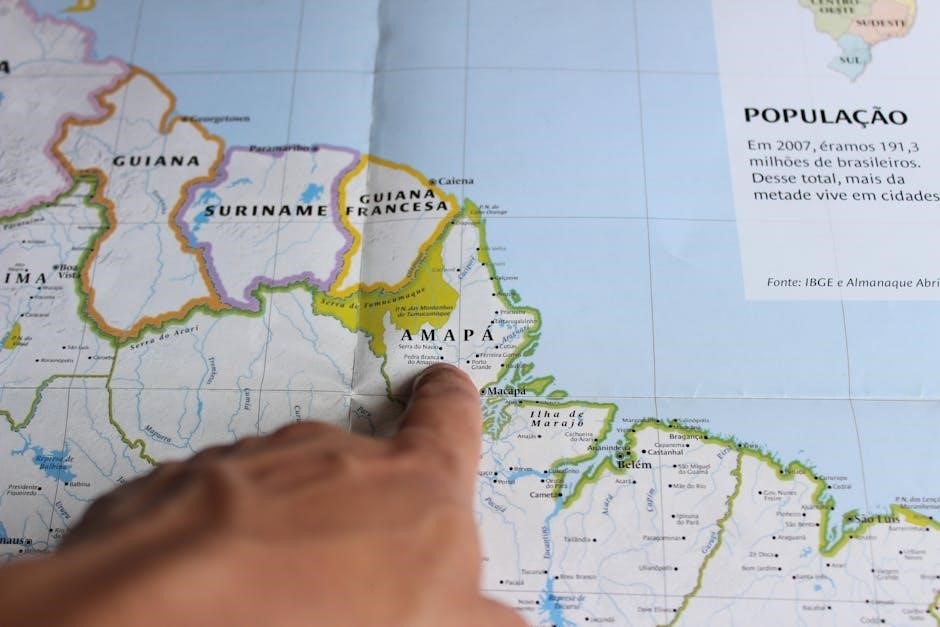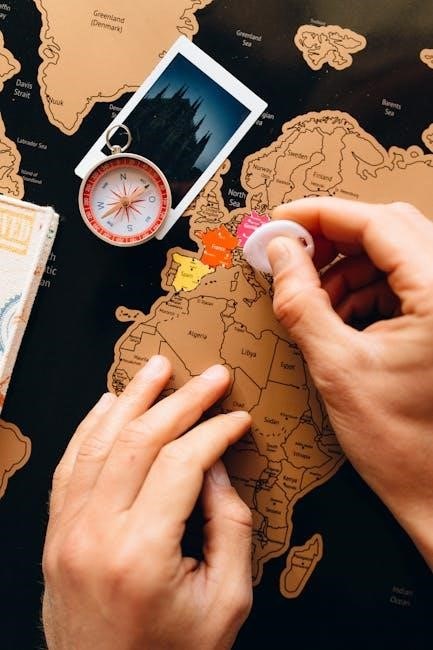
The parallel world concept explores alternate realities where individuals, often NEETs, are transported to fantastical realms, encountering magic, monsters, and unique challenges, reshaping their destinies entirely.
1.1 Overview of the Parallel World Genre
The parallel world genre, often referred to as “isekai,” has gained immense popularity in recent years, particularly in manga, anime, and light novels. These stories typically involve protagonists transported to alternate realities, where they encounter magical systems, mythical creatures, and unique challenges. In the context of A NEET’s Guide to the Parallel World, the genre takes a unique twist by focusing on NEETs—individuals who are “Not in Education, Employment, or Training”—as the protagonists. This narrative often explores themes of redemption, revenge, and self-discovery, blending fantasy with real-world struggles. The genre’s appeal lies in its ability to offer escapism while addressing relatable issues, making it a favorite among many readers seeking both adventure and emotional depth.
1.2 The Role of NEETs in Parallel World Stories
NEETs in parallel world stories often serve as underdog protagonists, leveraging their unique circumstances to navigate alternate realities. These characters, struggling with societal expectations and personal failures, find redemption through their new roles. In A NEET’s Guide to the Parallel World, the protagonist, often portrayed as a healer, transforms from a societal outcast to a pivotal figure in the new world. This transformation highlights their resilience and untapped potential, offering a powerful narrative of self-discovery and growth. By placing NEETs in positions of influence, these stories challenge societal norms and provide a fresh perspective on overcoming adversity, making them deeply relatable and inspiring for many readers;

The Origins of the NEET Phenomenon
NEET stands for “Not in Education, Employment, or Training,” describing youth disengaged from society. Originating in Japan, it reflects economic and social challenges, often linked to isolation and disengagement.
2.1 Definition and History of NEET
NEET stands for “Not in Education, Employment, or Training,” describing individuals, often youth, disconnected from societal engagement. Originating in Japan in the late 1990s, the term highlights economic and cultural challenges, reflecting a growing demographic of young people facing isolation and disengagement. This phenomenon emerged amid Japan’s economic stagnation, emphasizing social withdrawal and its implications on productivity and mental health. The concept has since influenced global discussions on youth disengagement, particularly in the context of parallel world narratives, where NEETs often find redemption through extraordinary circumstances, such as being transported to alternate realities.
2.2 Social and Cultural Implications of NEET in Japan
The NEET phenomenon in Japan carries profound social and cultural implications, reflecting societal pressures and expectations. It often leads to isolation, impacting mental health and self-esteem, while also affecting Japan’s workforce and economy. Cultural norms emphasize conformity and success, exacerbating the stigma surrounding NEETs. Families and communities frequently struggle to address these issues, leading to generational challenges. In parallel world narratives, NEETs are reimagined as protagonists who overcome their struggles through extraordinary means, offering a metaphor for redemption and societal reintegration. This duality highlights both the reality of NEET challenges and the escape offered by fantastical scenarios, blending social critique with hopeful transformation.

Transition to the Parallel World
NEETs are transported to parallel worlds, encountering magic and monsters. This transition thrusts them into new roles, offering escape from their previous struggles and unveiling new challenges.
3.1 The Mechanism of World Transition
The transition to the parallel world often occurs suddenly, with NEETs like Masamune and Leo being thrust into new realities through unexplained phenomena. These individuals, often marginalized in their original lives, find themselves in realms governed by magic and inhabited by fantastical creatures. The mechanism of transition appears random, yet it selects those who are disconnected from society, offering them a fresh start. Upon arrival, they are assigned roles, with some becoming healers or facing unique challenges. This shift from their mundane existence to a world of adventure and magic sparks their transformation, enabling them to overcome past traumas and forge new identities, making the transition both a escape and an opportunity for redemption.
3.2 Initial Experiences in the Parallel World
Upon arrival in the parallel world, NEETs like Masamune and Leo face overwhelming new realities. The transition is jarring, filled with unfamiliar landscapes, magical phenomena, and encounters with monsters. Initially, they struggle to comprehend their surroundings, often feeling disoriented and vulnerable. The world’s rules differ drastically from their own, with magic and strength determining survival. Many are assigned roles, such as healers, which carry unexpected responsibilities. The societal expectations of this new world further complicate their adaptation, as they must navigate its hierarchies and dangers. These initial experiences test their resilience, forcing them to confront their past weaknesses and embrace their newfound potential, marking the beginning of their transformative journey.

The Role of Healers in the Parallel World
Healers, despite being the weakest class, play a vital role in the parallel world, providing essential support and possessing unique abilities that can alter outcomes.
4.1 The Significance of Healers in Fantasy Worlds
In fantasy worlds, healers are indispensable, providing crucial support to allies and restoring balance in dire situations. Despite often being perceived as weaker, their ability to mend wounds and revive comrades makes them vital to any party’s survival. Healers also bring a unique perspective, emphasizing empathy and strategy over brute strength. Their role transcends combat, as they often serve as moral anchors and mediators, fostering unity among diverse groups. In the context of NEETs, the healer’s journey symbolizes redemption and self-discovery, proving that even the seemingly weakest can wield immense influence. Their presence underscores the importance of balance and collaboration in overcoming adversity.
4.2 The Challenges of Being a Healer
Being a healer in a parallel world presents unique challenges. Often perceived as weak, healers face skepticism and marginalization, despite their critical role. They must master intricate magical systems, balancing resource management with timely interventions. The burden of responsibility is immense, as their actions directly impact the survival of companions. Additionally, healers often struggle with societal expectations and isolation, as their abilities set them apart. For NEETs, this mirrors their real-world struggles with identity and purpose, making the healer’s journey a powerful metaphor for overcoming adversity and proving one’s worth in unconventional ways. The role demands resilience, adaptability, and a deep understanding of both magic and human nature.

The Revenge Theme in Parallel World Stories
The revenge theme in parallel world stories often drives NEET protagonists, who, after being wronged, use newfound powers to reclaim their dignity and exact justice in their new reality.
5.1 Motivations for Revenge in the Story
In A NEET’s Guide to the Parallel World, the protagonist’s motivations for revenge stem from deep-seated injustices. Masamune, once a bullied high school student, finds himself in a parallel world where he is transformed into a healer, the weakest occupation. Despite his newfound role, he is mocked and ostracized by his former classmates, who now hold powerful positions. This humiliation fuels his determination to prove his worth and exact revenge on those who wronged him. His journey is further driven by the companions he gains, such as demons and the white cat tribe, who become his allies in his quest for power and retribution. The story highlights how past traumas and societal rejection can ignite a fierce desire for vengeance and redemption in a new world.
5.2 The Evolution of the Protagonist
Masamune undergoes a significant transformation from a bullied teenager to a formidable healer in the parallel world; Initially, his lowly status and rejection by his peers fuel his anger and desire for revenge. However, as he navigates the challenges of this new realm, he discovers his unique abilities and forges strong bonds with unexpected allies, such as demons and the white cat tribe. These experiences shape him into a more confident and powerful individual. The protagonist’s evolution is marked by his growth from a victim of circumstance to a leader who commands respect, ultimately seeking not just revenge but also a place of belonging and purpose in this alternate reality.

Companions and Allies in the Parallel World
The protagonist forms strong bonds with diverse companions, including demons and the white cat tribe, who support him in overcoming challenges and achieving his goals in this new realm.
6.1 Key Companions and Their Roles
In the parallel world, Masamune, the protagonist, forms crucial alliances with diverse companions, including members of the white cat tribe and demons, who play pivotal roles in his journey. The white cat tribe, known for their agility and wisdom, often serve as strategic advisors, helping Masamune navigate the complexities of this new realm. Demons, despite their fearsome reputation, prove to be loyal and formidable allies, contributing their immense strength in battles. Together, these companions not only aid Masamune in overcoming adversaries but also provide emotional support, helping him cope with the hardships of his new life. Their diverse skills and unwavering loyalty make them indispensable to Masamune’s quest for revenge and survival in this unforgiving world.
6.2 Building Alliances in the New World
Building alliances in the parallel world is crucial for survival and success. Masamune, initially isolated, forms strategic bonds with diverse groups, including demons and the white cat tribe. These alliances are forged through shared goals, mutual respect, and trust, often born from necessity in a hostile environment. The white cat tribe, with their wisdom and agility, complements Masamune’s healer abilities, while demons provide brute strength and loyalty. Together, they overcome challenges, with each group benefiting from the partnership. These alliances not only strengthen Masamune’s position but also foster personal growth, as he learns to lead and rely on others. This collaborative approach becomes a cornerstone of his journey, enabling him to thrive in a world where isolation equals vulnerability.

The World-Building of the Parallel Realm
The parallel world is richly detailed with magic, monsters, and diverse inhabitants. Its unique magical systems and creatures create a immersive environment, shaping the story’s adventures and conflicts.
7.1 Magical Systems and Rules
The parallel world operates under a structured magical system, where abilities are governed by clear rules and hierarchies. Magic is a fundamental force, shaping the environment and interactions. Characters like Masamune, initially perceived as weak due to their role as healers, often discover unique strengths within this framework. The magical rules dictate how powers are acquired, enhanced, and utilized, influencing both combat and everyday life. These systems are deeply intertwined with the world’s culture, creating a rich tapestry of possibilities and limitations. The structured nature of magic ensures a balanced yet dynamic world, where strategy and creativity play key roles in overcoming challenges.
7.2 The Geography and Inhabitants of the Parallel World
The parallel world is characterized by vast and diverse landscapes, ranging from enchanted forests to desolate wastelands. Its geography is marked by unique regions, each inhabited by distinct groups. Humans coexist with magical creatures, while demons and the white cat tribe occupy their own territories. The world is governed by a harsh environment, where survival depends on adapting to the prevalent magical forces. Monsters roam freely, adding to the perilous nature of this realm. This intricate setup fosters a dynamic interplay between its inhabitants, creating a rich and immersive ecosystem.

The NEET Exam and Its Implications
The NEET exam is a pivotal entrance test in India for medical admissions, conducted by NTA, determining students’ futures in healthcare education and careers nationwide.
8.1 Overview of the NEET Exam
The National Eligibility cum Entrance Test (NEET) is a national-level entrance examination conducted by the National Testing Agency (NTA). It is a prerequisite for admission to undergraduate medical courses such as MBBS and BDS in India. The exam evaluates students’ knowledge in physics, chemistry, and biology, with a focus on scientific aptitude and problem-solving skills. NEET is a single-window exam, replacing multiple entrance tests previously conducted by various institutions. The exam is typically held offline, featuring multiple-choice questions, and its results determine eligibility for medical education across the country. NEET has become a critical milestone for students aspiring to pursue careers in medicine, with its scores serving as the primary criterion for admissions.
8.2 Preparation and Strategies for the Exam
Preparation for the NEET exam requires a well-structured approach, focusing on mastering the syllabus and improving problem-solving skills. Candidates should thoroughly study physics, chemistry, and biology, emphasizing NCERT textbooks for foundational concepts. Regular practice with previous years’ question papers and mock tests helps build exam stamina and time management; Identifying weak areas and addressing them through targeted study is crucial. Additionally, staying calm and confident during the exam is essential. Utilizing online resources and coaching materials can enhance preparation. Candidates are advised to budget their time wisely, attempting high-weightage topics first. A balanced study schedule, combined with proper revision, ensures holistic preparation for the exam.
Challenges Faced by NEETs in the Parallel World
NEETs in the parallel world face immense struggles adapting to new environments, overcoming social barriers, and battling psychological challenges, all while navigating unfamiliar magical systems and threats.
9.1 Adapting to a New Environment
NEETs transported to a parallel world face significant challenges adapting to unfamiliar environments. The transition often involves navigating magical systems, hostile creatures, and entirely new societal structures. Many struggle to apply their Earth-based skills in this alien setting, leading to feelings of inadequacy and disorientation. The lack of familiarity with local customs, languages, and resources further exacerbates their difficulties. Psychological adaptation is equally demanding, as the pressure to survive in a dangerous world can lead to anxiety and isolation. To thrive, NEETs must quickly learn to rely on their wits, forge alliances, and embrace new identities, transforming their former lifestyles to fit the demands of this uncharted realm.
9.2 Overcoming Social and Psychological Barriers
NEETs in the parallel world frequently grapple with profound social and psychological challenges. Many enter this new realm burdened by past traumas, such as bullying or social isolation, which hinder their ability to trust others or form meaningful connections. The pressure to prove themselves in a world where strength often dictates social standing can lead to self-doubt and insecurity. Additionally, the shift from a passive NEET lifestyle to an active role in shaping their destiny demands significant mental fortitude. To overcome these barriers, NEETs must confront their inner demons, develop resilience, and foster relationships built on trust and mutual respect. This transformation is crucial for their survival and success in the parallel world.

Cultural and Social Impacts of the Parallel World
The parallel world experiences cultural shifts as NEETs introduce Earth’s influences, blending societal norms and fostering unexpected cultural exchanges that reshape both worlds’ identities.
10.1 Influence of the Parallel World on Earth
The parallel world’s influence on Earth is profound, as NEETs returning with newfound knowledge and abilities challenge societal norms. Their experiences introduce magical concepts and alternative problem-solving strategies, inspiring technological advancements. Cultural exchanges become bidirectional, with Earth’s media and values impacting the parallel world. This cross-reality interaction fosters a blending of ideas, leading to a reevaluation of Earth’s social structures. The presence of healers and their unique skills sparks interest in alternative medicine, while the stories of revenge and redemption inspire personal growth. Over time, the parallel world’s impact reshapes Earth’s cultural landscape, encouraging innovation and introspection. This transformative influence highlights the potential for cross-dimensional experiences to drive global change.
10.2 Cultural Exchange Between Worlds
Cultural exchange between the parallel world and Earth flourishes as NEETs bridge the gap, sharing knowledge and traditions. Earth’s technological advancements inspire the parallel world’s magical innovations, while its artistic and literary works gain immense popularity there. In return, the parallel world’s unique customs, festivals, and philosophies captivate Earth, fostering mutual curiosity and understanding. This exchange leads to the creation of hybrid cultural practices, blending Earth’s modernity with the parallel world’s mysticism. Over time, both worlds embrace diversity, enriching each other’s societies and fostering global unity. The cross-dimensional dialogue becomes a cornerstone of cultural evolution, highlighting the transformative power of shared experiences and ideas.

The Future of NEETs in the Parallel World
NEETs in the parallel world face boundless opportunities, evolving into pivotal figures who reshape societies and forge alliances, ensuring their long-term relevance and impact in this new realm.
11.1 Opportunities and Threats
NEETs in the parallel world encounter vast opportunities, such as gaining extraordinary abilities, forming powerful alliances, and reshaping their identities. However, they also face significant threats, including formidable enemies, societal pressures, and the constant need to adapt. The parallel world offers a chance for redemption and growth, but it also presents challenges that test their resolve and survival skills. Balancing these opportunities and threats is crucial for their long-term success in this new realm.
11.2 The Long-Term Implications for NEETs
The long-term implications for NEETs in the parallel world are profound, as their experiences shape their identities and futures. Many NEETs, once marginalized, discover hidden strengths, fostering personal growth and resilience. Societies in the parallel world often welcome their unique perspectives, offering integration and purpose. However, the blending of worlds creates complexities, as NEETs must reconcile their past and present selves. Over time, their journeys redefine societal roles, challenging stereotypes and inspiring others. The parallel world becomes a catalyst for transformation, proving that even the most overlooked individuals can thrive in extraordinary circumstances, leaving a lasting legacy in both worlds.